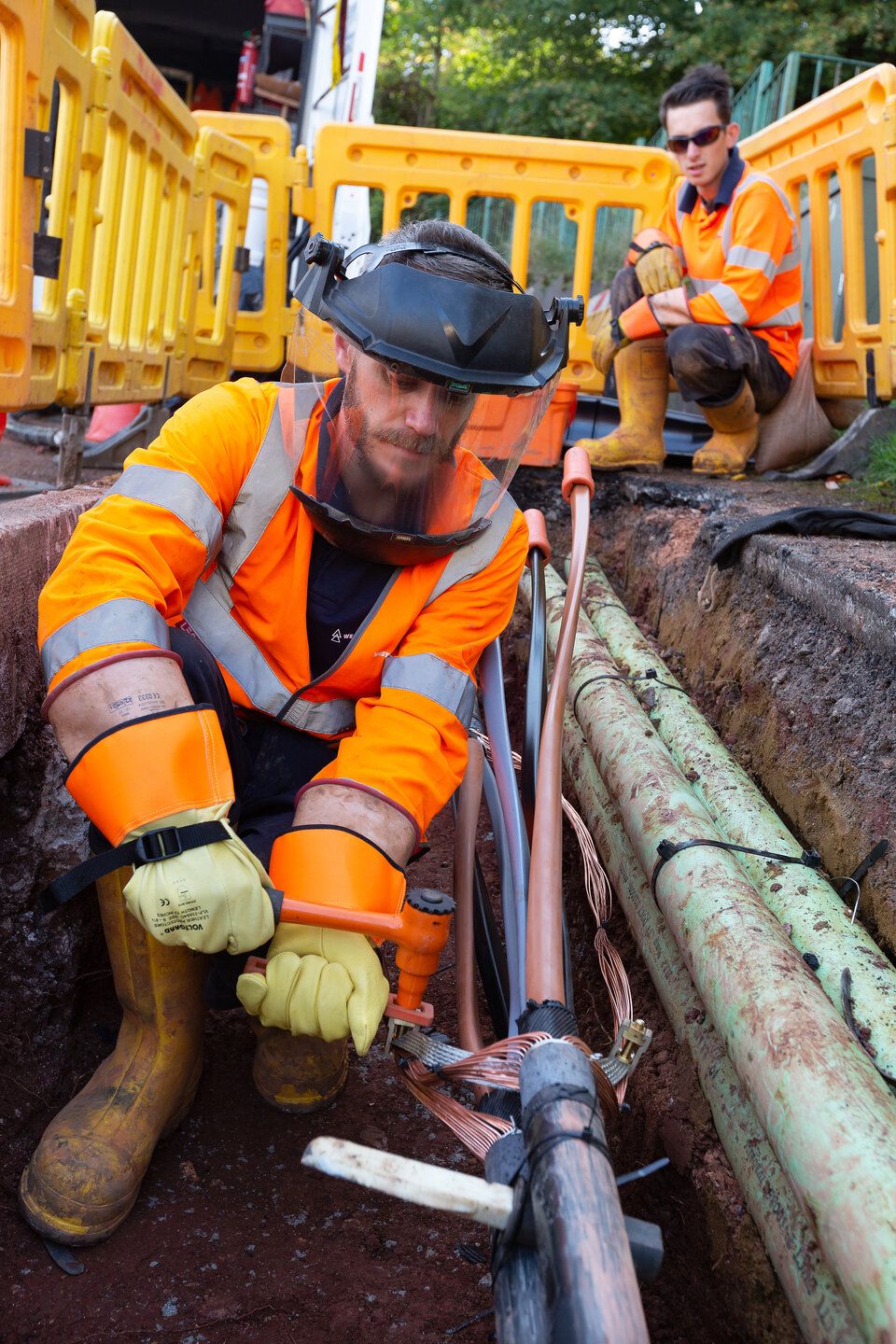Torquay reinforcement project helps WPD and the South West towards a net zero future
As we work towards a net zero future, more low carbon technologies are available now more than ever, and are a huge part of the latest reinforcement project taking place in Torquay.
 Jointer Andy Brown installing a new 300 wavecon branch joint to improve the electricity networks capacity and reliability, with jointer Brendon Preece.
Jointer Andy Brown installing a new 300 wavecon branch joint to improve the electricity networks capacity and reliability, with jointer Brendon Preece.
Works to upgrade two 11kV transformers and overlay over one mile of low voltage mains electricity cable, and all associated services, to over 500 properties is taking place in Shiphay, Torquay.
The £500,000 works will reinforce the network ready for the predicted up-take of future low carbon technologies, helping WPD and the South West towards a net zero future. While reducing power cuts to an area with some of Devon’s worst served customers and businesses, the work will improve reliability and accessibility to the network at the same time.
Distribution manager Matt O’Dowd, said: “By using information from the network strategy team, along with fault history and past trends, we have been able to tackle two issues at once - reinforcing the network with lager capacity transformers and improving network security. This proactive project will enable customers to have car charging units, heat pumps and other low carbon technologies (LCTs) fitted to their homes without delays.
“It will also help prevent future faults for the customers in one of the more affected areas in the Devon patch. To achieve net zero it is important that we are efficient with our time, materials and money and planning works in a way as to minimise our carbon footprint. These works will eliminate potential fault works and minimise connection works when LCTs really start to take off, leading to less disturbance to our customers and ensuring we deliver the best service possible, improving the customers’ journey with WPD on two fronts.”
Torquay team technician Ben Brooks, who oversaw the project, said: “Maintaining access and keeping disruption to a minimum for customers has been our main focus. Broader measures is something along with safety that always has to be in the front of our minds. You have to think from a customer’s point of view, asking yourself would you be happy if you lived here. We did this by ensuring that we spent time talking to residents and locals who would be effected by the works and including them in the early stages really helps with the latter part of the project. It also means meeting with contractors to discuss issues and come up with solutions if things need to change, as they often do, and keeping all parties informed.
“We kept organisation to a strict timescale which is crucial, so customers do not have more disruption after the agreed date, which is February 2021. This large scheme also has to fit in around other works, so missing key dates can then cause staffing issues, so by monitoring progress you can keep ahead of these things.
“Weather is a big problem as excessive rain can make jointing and excavation very difficult. So this is something we are constantly keeping an eye on to ensure the safety of the teams and the public. A lot of materials also need to be ordered ahead of the job which takes a lot of time and organisation.”
Although the project hasn’t been without its difficulties, Ben said. “I am really enjoying the project; it’s nice to be overseeing something of this importance to the area. The time spent planning is paying off at the moment and we are happy with progress. With excavation, you will always come across some unknowns but we will tackle the issues and resolve them as they come.”
- Operational
